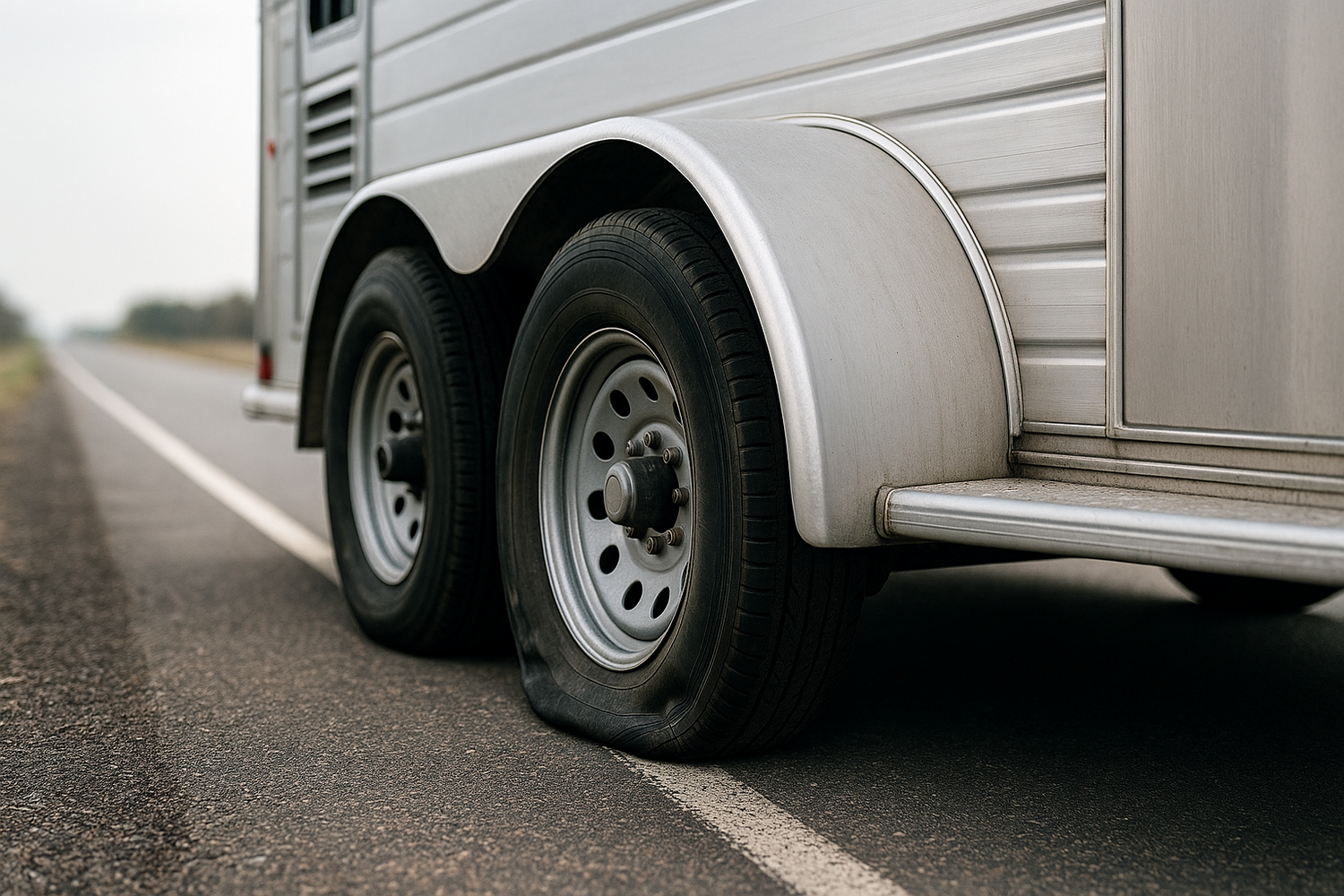Maintaining the correct tire pressure on your trailer is crucial for ensuring safety and enhancing performance. A trailer tire pressure and temperature monitoring system plays a vital role in achieving this. Proper tire pressure not only ensures better fuel efficiency but also significantly reduces the risk of tire blowouts, which can lead to catastrophic accidents.
When tires are under-inflated, they can overheat, leading to increased wear and tear, which ultimately shortens their lifespan. On the other hand, over-inflated tires can result in diminished traction and an increased risk of skidding. By utilizing a trailer tire pressure and temperature monitoring system, you can:
- Receive real-time alerts regarding tire pressure and temperature changes, allowing you to make informed decisions immediately.
- Prevent potential road hazards by addressing issues before they escalate into serious problems.
- Enhance fuel efficiency by maintaining optimal tire pressure, translating to cost savings over time.
Incorporating such a monitoring system turns any trailer into a smart trailer, offering peace of mind while on the road. Tow with peace of mind, knowing that trailerwatchdog is standing guard.
Understanding Temperature Effects on Trailer Tires

The temperature of your trailer tires significantly impacts their performance and longevity. Tires are designed to operate efficiently within a specific temperature range. When temperatures exceed this range, a variety of problems can arise, affecting both safety and handling.
Heat generated from friction between the tire and the road can lead to increased tire pressure. If not monitored, this can result in tire blowouts or rapid wear. Additionally, extreme heat can cause the rubber compounds in tires to degrade more quickly, resulting in cracks and reduced tread life. Conversely, cold temperatures can lead to under-inflation, which can also compromise performance and safety.
It is crucial to understand the relationship between tire pressure and temperature:
- As temperature rises, tire pressure increases: A 10°F increase in temperature can raise tire pressure by approximately 1 psi.
- Cold temperatures can reduce pressure: For every 10°F drop, tire pressure decreases by about 1 psi.
To mitigate these risks, a trailer tire pressure and temperature monitoring system is invaluable. It allows you to track both parameters in real-time, ensuring your tires remain within safe operating conditions, thus enhancing your trailer's safety and performance.
Key Features of Monitoring Systems

Investing in a trailer tire pressure and temperature monitoring system offers a range of features that significantly enhance the safety and efficiency of your trailer. Understanding these features is essential for making an informed decision about which system best meets your needs.
Here are some key features to look for in a quality monitoring system:
- Real-Time Monitoring: The ability to receive continuous data on tire pressure and temperature ensures that you are always informed about the status of your tires. This real-time feedback allows for immediate action if any issues arise.
- Alerts and Notifications: Many systems offer customizable alerts that can notify you via smartphone or other devices if tire pressure or temperature exceeds predefined thresholds. This proactive approach helps prevent potential failures before they occur.
- Wireless Connectivity: A good monitoring system should feature wireless technology to ensure seamless communication between the sensors and your monitoring device. This feature enhances the convenience of accessing tire data without the hassle of wires.
- Multi-Axle Support: For trailers with multiple axles, the ability to monitor each axle independently provides comprehensive insights into the performance of all tires, ensuring balanced wear and optimal handling.
- Durability and Weather Resistance: Given that trailer tires are often exposed to harsh conditions, a robust monitoring system should be built to withstand elements like water, dust, and heat.
Ultimately, these features not only improve safety but also contribute to the longevity of your trailer tires, making a tire pressure and temperature monitoring system a wise investment for any trailer owner.
Benefits of Real-Time Monitoring for Trailers

In the world of trailer management, real-time monitoring stands out as a game-changing feature that can substantially improve safety and operational efficiency. By continuously tracking tire pressure and temperature, trailer owners can reap numerous benefits that ultimately enhance their overall experience.
Here are some significant advantages of implementing a real-time monitoring system for your trailer:
- Enhanced Safety: Monitoring tire pressure and temperature in real-time helps prevent blowouts and other tire-related accidents. Regular alerts ensure that any deviations from standard operating conditions are immediately addressed, reducing the risk of catastrophic failures.
- Improved Fuel Efficiency: Properly inflated tires contribute to better fuel efficiency. Real-time monitoring allows you to maintain optimal tire pressure, which can lead to reduced fuel costs and lower carbon emissions over time.
- Increased Longevity of Tires: Continuous monitoring helps identify issues like under-inflation or excessive heat that can lead to premature tire wear. Addressing these problems promptly can extend the lifespan of your tires, ultimately saving you money on replacements.
- Data-Driven Decisions: Real-time data allows you to make informed decisions regarding maintenance and repairs. By analyzing tire performance over time, you can identify patterns and proactively manage your trailer’s health.
- Peace of Mind: Knowing that your trailer is equipped with a reliable monitoring system allows you to focus on your journey, confident that you are minimizing risks associated with tire failures.
Overall, the integration of a real-time monitoring system into your trailer setup is not just about convenience; it's about ensuring safety, efficiency, and peace of mind on every journey.
Installation Guide for Tire Monitoring Systems
Installing a trailer tire pressure and temperature monitoring system is a straightforward process that can significantly enhance the safety and performance of your trailer. Below is a step-by-step guide to help you through the installation:
- Gather Your Tools: Before starting, ensure you have all necessary tools at hand. Common tools include a wrench, screwdriver, and possibly a tire pressure gauge for initial readings.
- Select Sensor Locations: Identify where the sensors will be installed on your trailer's tires. Most systems require that the sensors be placed on the valve stems of each tire for accurate readings.
- Install the Sensors: Follow the manufacturer's instructions to securely attach the sensors. Typically, this involves removing the valve stem cap, screwing the sensor onto the valve stem, and replacing the cap.
- Connect the Monitor: Depending on the system, you may need to connect a display monitor inside your tow vehicle or on the trailer itself. Ensure it is positioned for easy visibility while driving.
- Pair the Devices: Activate the sensors and pair them with the display monitor according to the manufacturer's guidelines. This step is essential for the system to function correctly.
- Conduct a System Check: Once installed, perform a comprehensive check. Verify that the monitor is receiving data from all sensors and that readings are accurate. Conduct a test drive to ensure the system works while in motion.
- Regular Maintenance: After installation, it’s important to periodically check the sensor battery levels and functionality. Regular maintenance will ensure that your monitoring system remains effective over time.
By following these steps, you can successfully install a tire monitoring system on your trailer, providing you with real-time data to keep your travels safe and efficient.
Choosing the Right Monitoring System for Your Trailer

When it comes to enhancing the safety and performance of your trailer, selecting the right trailer tire pressure and temperature monitoring system is crucial. With various options available on the market, it’s important to consider several factors to ensure you make the best choice for your needs.
- Compatibility: Ensure that the monitoring system is compatible with your specific trailer type and tire size. Some systems are designed for light-duty trailers, while others are better suited for heavy-duty applications.
- Sensor Technology: Look for systems that utilize advanced sensor technology for accurate readings. Wireless systems often provide convenience, while hardwired options can offer reliability in rugged conditions.
- Real-Time Data: Opt for a monitoring system that provides real-time data. This feature will allow you to monitor tire pressure and temperature continuously, enabling proactive measures to prevent issues before they escalate.
- User Interface: A user-friendly interface is essential. Choose a system that offers an easy-to-read display and intuitive navigation, making it simple to access the information you need while on the road.
- Alerts and Notifications: Select a system that includes customizable alerts and notifications. These features can inform you of any irregularities in tire pressure or temperature, allowing for timely intervention.
- Price and Warranty: Consider your budget but also weigh the value of the system features. Look for a product that offers a good warranty, indicating the manufacturer’s confidence in their product’s durability.
By taking these factors into account, you can make an informed decision when choosing the right monitoring system for your trailer. Don’t compromise on safety; tow with peace of mind, knowing that trailerwatchdog is standing guard.








